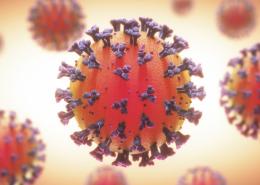Pfizer Announces Topline Results from Phase 2b Trial of Vupanorsen in Statin-treated Participants with Dyslipidemia
- Study met its primary endpoint, achieving a statistically significant reduction in non-high density lipoprotein cholesterol (non-HDL-C) – as well as a statistically significant reduction in the secondary endpoint of triglycerides (TG) – at all dose levels, compared to placebo
- The most common laboratory abnormalities were increases greater than three times the upper limit of normal in ALT, a liver enzyme, and certain doses of vupanorsen were associated with increases from baseline in hepatic fat fraction
- Company will continue to review findings to determine next steps regarding future development
- Full results to be submitted for future scientific publication and presentation
NEW YORK, N.Y., November 24, 2021 — Pfizer Inc. (NYSE: PFE) today announced topline results from the Phase 2b study of vupanorsen (PF-07285557), an investigational antisense therapy being developed for potential indications in cardiovascular (CV) risk reduction and severe hypertriglyceridemia (SHTG). In the study, vupanorsen had a statistically significant effect in lowering non-high density lipoprotein cholesterol (non-HDL-C), triglycerides (TG) and angiopoietin-like 3 (ANGPTL3) at all dose levels at 24 weeks, compared to placebo. Apolipoprotein B (ApoB) and low-density lipoprotein cholesterol (LDL-C) were significantly reduced by some (but not all) doses of vupanorsen.
“The data from our Phase 2b trial indicate vupanorsen achieved statistically significant lowering of non- HDL-C, triglycerides and other lipoproteins related to cardiovascular disease,” said James Rusnak, M.D., Ph.D., Senior Vice President and Chief Development Officer, Internal Medicine and Hospital, Pfizer. “We will continue to review and carefully consider these findings to determine the appropriate next steps regarding future development. Improving the lives of those affected by cardiovascular disease remains a priority for us, as does addressing the impacts of severe hypertriglyceridemia, an important risk factor for atherosclerotic cardiovascular disease and a potential cause of acute pancreatitis.”
The most common adverse events were injection site reactions, which occurred most often in the highest vupanorsen dose group. The most common laboratory abnormalities were increases greater than three times the upper limit of normal in alanine aminotransferase (ALT), an enzyme concentrated primarily in the liver. Elevations in ALT occurred more commonly at higher doses of vupanorsen. Higher doses of vupanorsen were also associated with elevations in another liver enzyme, aspartate aminotransferase (AST). There were no Hy’s Law cases in vupanorsen-treated subjects, and no meaningful changes in bilirubin. Certain doses of vupanorsen were associated with increases from baseline in hepatic fat fraction, measured by magnetic resonance imaging proton density fat fraction at Week 24, compared to placebo. No subject had a confirmed platelet count abnormality or a confirmed reduction in the estimated glomerular filtration rate. The incidence of serious adverse events (SAEs) was generally similar across the dose groups, and there were no treatment-related SAEs.
The global Phase 2b, multicenter, randomized, double-blind, placebo-controlled, dose-ranging, 8-arm parallel-group study – also known as TaRgeting ANGPTL3 with an aNtiSense oLigonucleotide in AdulTs with dyslipidEmia (TRANSLATE-TIMI 70) – enrolled 286 participants 40 years of age and older with dyslipidemia, defined in this study as participants with elevated non-HDL-C and TG who are receiving a stable dose of a statin with or without ezetimibe. Vupanorsen was administered subcutaneously at various dose levels every two weeks or four weeks. Pfizer collaborated with the Thrombolysis in Myocardial Infarction (TIMI) Study Group on the design and execution of the study. Additional information about the study can be found at www.clinicaltrials.gov under the identifier NCT04516291.
Full results from TRANSLATE-TIMI 70 will be submitted for future scientific publication and presentation.
About Vupanorsen
Vupanorsen is an investigational antisense therapy discovered by Ionis and being developed by Pfizer for potential indications in CV risk reduction and SHTG. Vupanorsen acts through a novel mechanism, targeting ANGPTL3, a genetically validated target of lipoprotein metabolism.1 Vupanorsen was developed using Ionis' advanced LIgand Conjugated Antisense (LICA) technology platform. The potential therapeutic benefits of ANGPTL3 reduction are supported by the discovery that people with a genetic deficiency in ANGPTL3 have reduced levels of LDL-C and TG, and a decreased risk of coronary artery disease.2 In a Phase 1 study, subjects treated with vupanorsen achieved robust, dose-dependent reductions in ANGPTL3, TG, LDL-C, non-HDL-C and total cholesterol with a favorable safety and tolerability profile.3 In a Phase 2a study, vupanorsen met the primary endpoint of significant reductions in TG levels and multiple secondary endpoints compared to placebo, with a favorable safety and tolerability profile.4
About Pfizer: Breakthroughs That Change Patients’ Lives
At Pfizer, we apply science and our global resources to bring therapies to people that extend and significantly improve their lives. We strive to set the standard for quality, safety and value in the discovery, development and manufacture of health care products, including innovative medicines and vaccines. Every day, Pfizer colleagues work across developed and emerging markets to advance wellness, prevention, treatments and cures that challenge the most feared diseases of our time. Consistent with our responsibility as one of the world's premier innovative biopharmaceutical companies, we collaborate with health care providers, governments and local communities to support and expand access to reliable, affordable health care around the world. For more than 170 years, we have worked to make a difference for all who rely on us. We routinely post information that may be important to investors on our website at www.Pfizer.com. In addition, to learn more, please visit us on www.Pfizer.com and follow us on Twitter at @Pfizer and @PfizerNews, LinkedIn, YouTube and like us on Facebook at Facebook.com/Pfizer.
References
1Endocrine. 2016 Jan 11;52(2):187-193.
2JAMA Cardiol. 2018 Oct 1;3(10):957-966.
3N Engl J Med. 2017 Jul 20;377(3):222-232.
4Eur Heart J. 2020 Oct 21;41(40) 3936–3945.
Media Contact:
PfizerMediaRelations@pfizer.com
212-733-1226
Investor Contact:
IR@pfizer.com
212-733-4848
Pfizer Disclosure Notice
The information contained in this release is as of November 24, 2021. Pfizer assumes no obligation to update forward-looking statements contained in this release as the result of new information or future events or developments.
This release contains forward-looking information about vupanorsen (PF-07285557), including its potential benefits, that involves substantial risks and uncertainties that could cause actual results to differ materially from those expressed or implied by such statements. Risks and uncertainties include, among other things, the uncertainties inherent in research and development, including the ability to meet anticipated clinical endpoints, commencement and/or completion dates for our clinical trials, regulatory submission dates, regulatory approval dates and/or launch dates, as well as the possibility of unfavorable new clinical data and further analyses of existing clinical data; whether or when vupanorsen (PF- 07285557) has a path forward for future development; the risk that clinical trial data are subject to differing interpretations and assessments by regulatory authorities; whether regulatory authorities will be satisfied with the design of and results from our clinical studies; whether and when drug applications may be filed in any jurisdictions for vupanorsen (PF-07285557); whether and when any such applications may be approved by regulatory authorities, which will depend on myriad factors, including making a determination as to whether the product's benefits outweigh its known risks and determination of the product's efficacy and, if approved, whether vupanorsen (PF-07285557) will be commercially successful; decisions by regulatory authorities impacting labeling, manufacturing processes, safety and/or other matters that could affect the availability or commercial potential of vupanorsen (PF-07285557); the impact of COVID-19 on Pfizer’s business, operations and financial results; and competitive developments.
A further description of risks and uncertainties can be found in Pfizer’s Annual Report on Form 10-K for the fiscal year ended December 31, 2020 and in its subsequent reports on Form 10-Q, including in the sections thereof captioned “Risk Factors” and “Forward-Looking Information and Factors That May Affect Future Results”, as well as in its subsequent reports on Form 8-K, all of which are filed with the U.S. Securities and Exchange Commission and available at www.sec.gov and www.pfizer.com.
###












